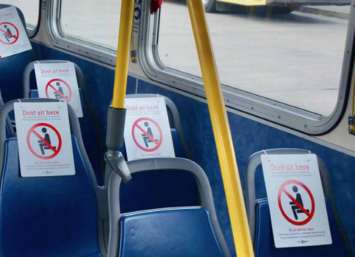
The nation’s transit systems carried 81 percent fewer riders in May, 2020 than in May, 2019, according to data posted yesterday by the Federal Transit Administration. This drop is almost as great as the 84 percent decline reported for April.
Rail was hardest hit, with an 89 percent fall in ridership, while buses lost 74 percent of riders. For the year to date, nationwide ridership is down 41 percent, with rail losing 44 percent and bus 38 percent.
The biggest declines were in urban areas that see the most transit ridership: New York lost 90 percent of its riders, Washington 89 percent, Philadelphia 88 percent, and Boston and San Francisco-Oakland 85 percent. Falldowns were smallest in urban areas such as San Antonio (-45%) and Las Vegas (-54%) where transit plays a relatively insignificant role in the region’s transportation.
One reason for these differences is that places like New York and San Francisco were most impacted by strict stay-at-home orders. But another is that regions with high transit ridership have a lot of middle-class riders who are now working at home or taking advantage of the reduced congestion by driving for trips they might otherwise have made by transit, while regions with low transit ridership serve mainly working class riders who don’t have such options.
View or download the PDF on May transit ridership
Read the rest of this piece at The Antiplanner.
Randal O’Toole is a senior fellow with the Cato Institute specializing in land use and transportation policy. He has written several books demonstrating the futility of government planning. Prior to working for Cato, he taught environmental economics at Yale, UC Berkeley, and Utah State University.












